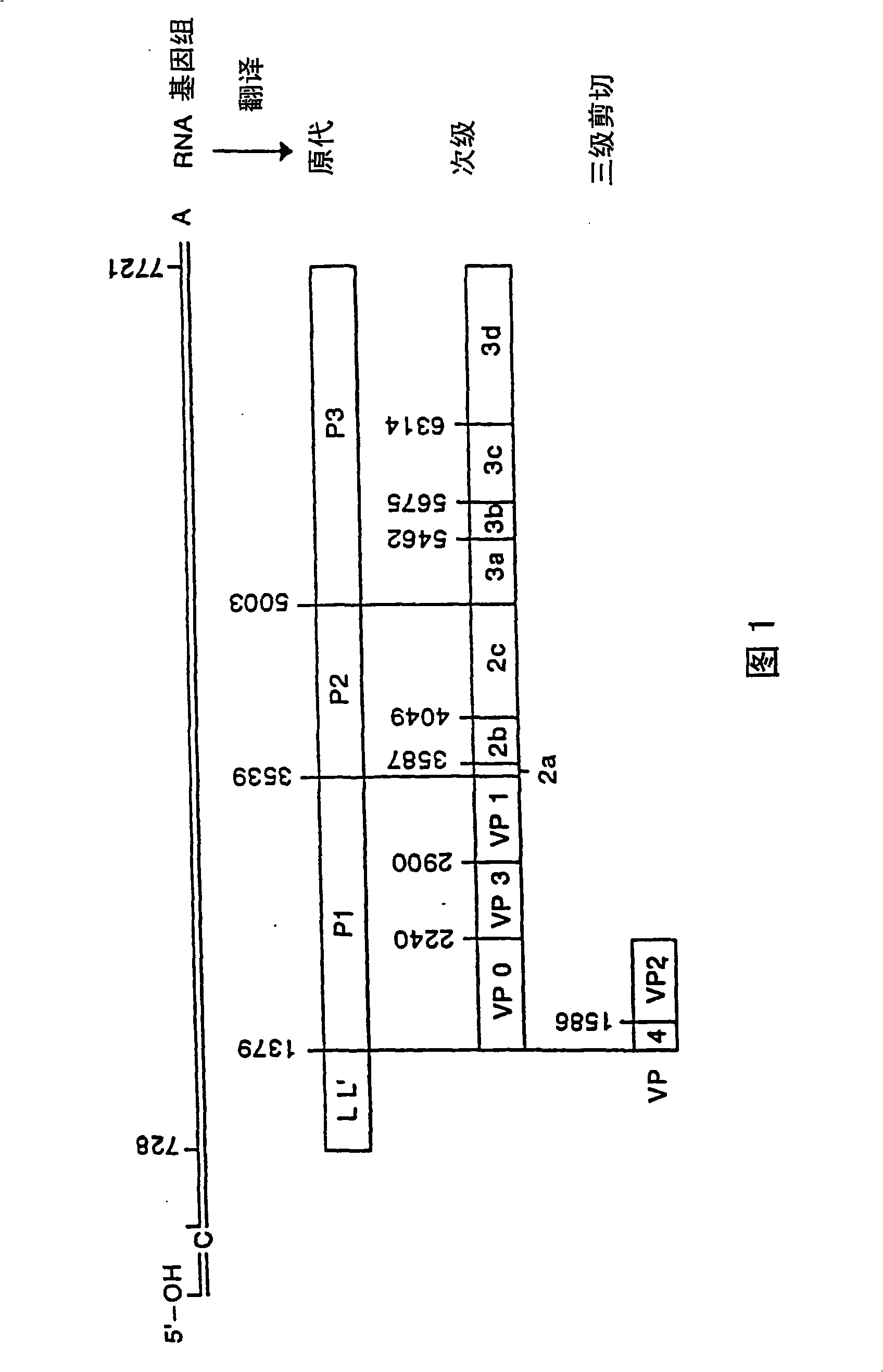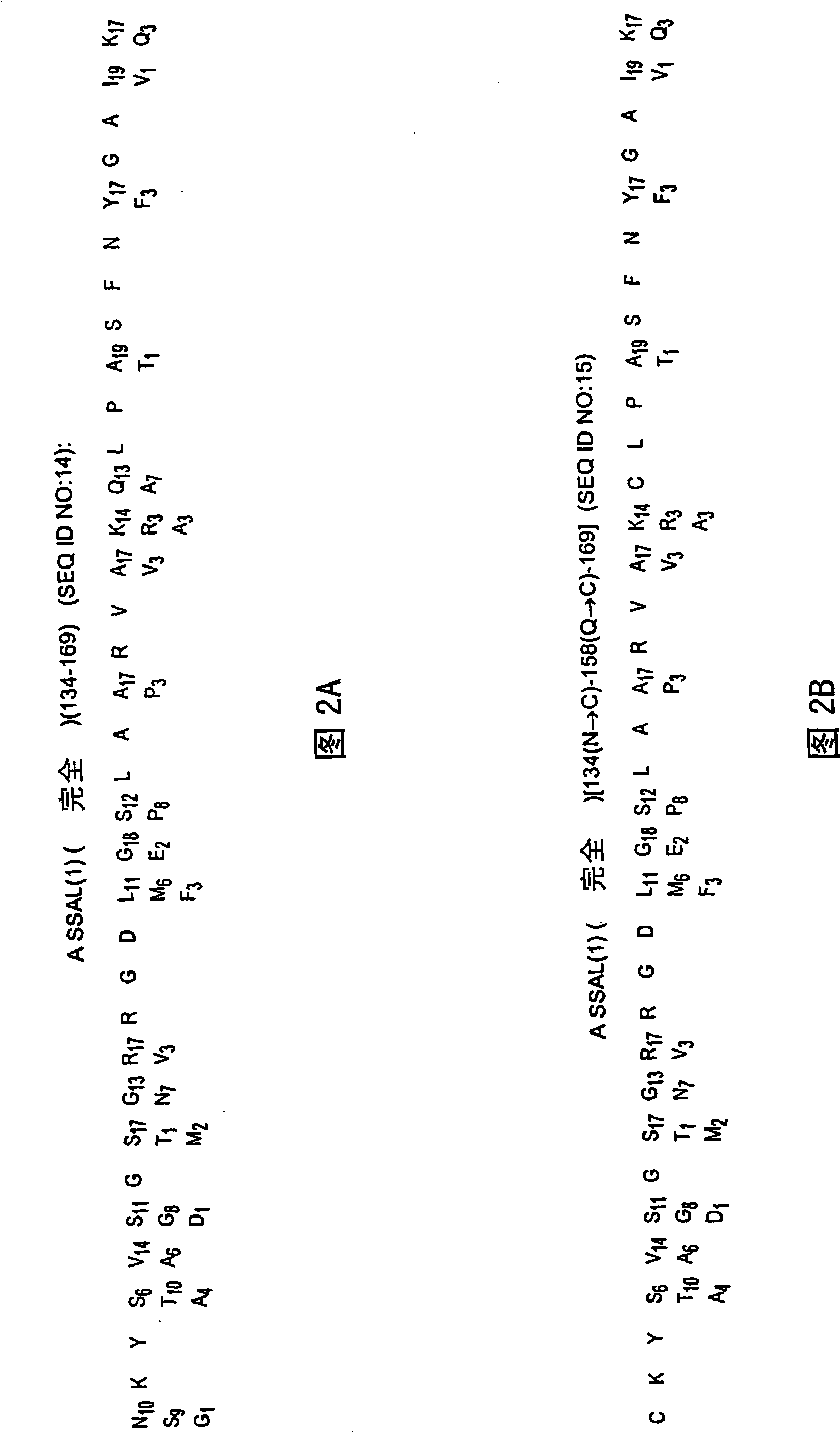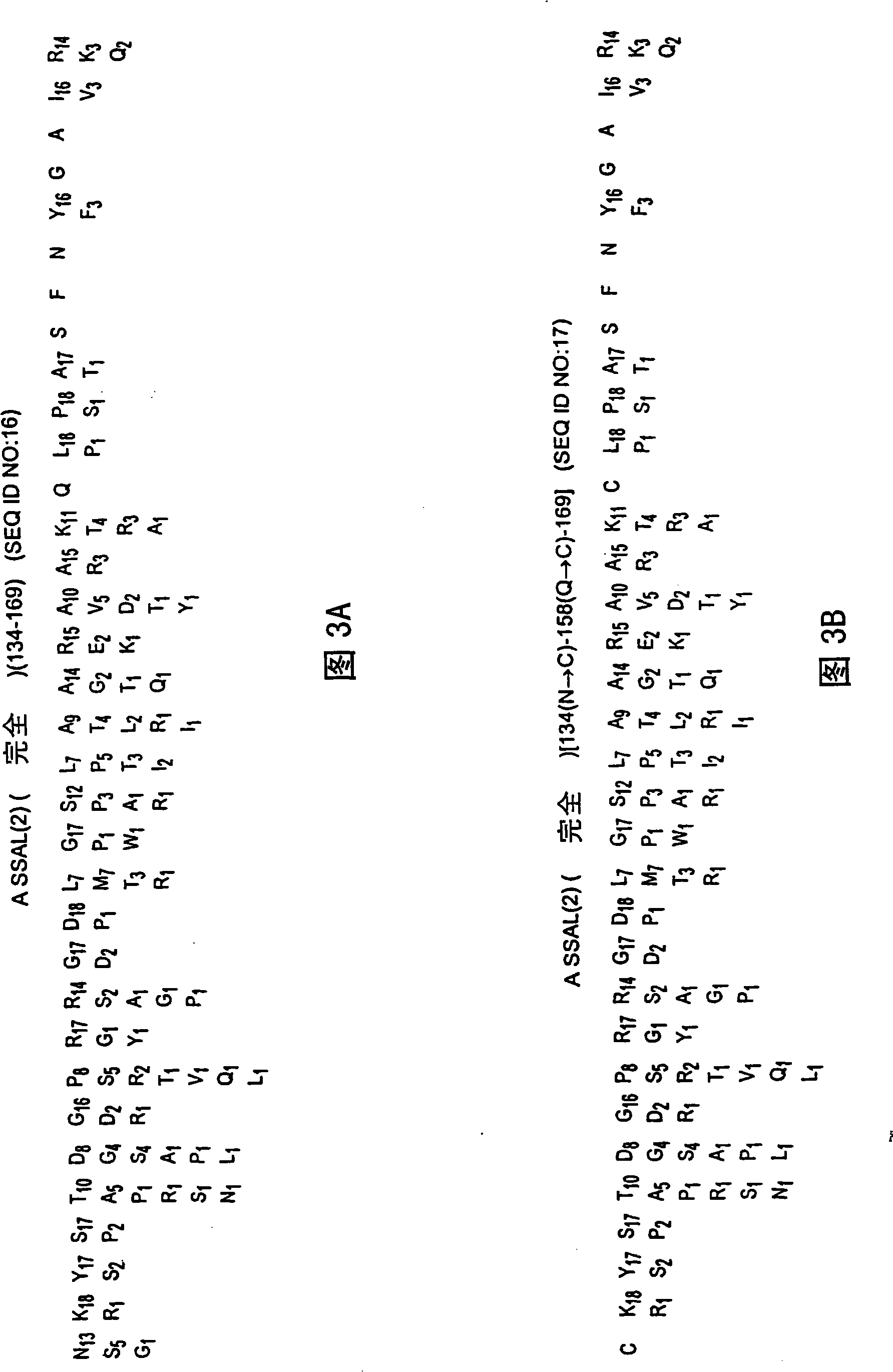Synthetic peptide vaccines for foot-and-mouth disease
A free and sequential technology, applied in the field of synthetic peptide vaccines for foot-and-mouth disease, which can solve the problems of discontinuous high affinity and difficult identification
- Summary
- Abstract
- Description
- Claims
- Application Information
AI Technical Summary
Problems solved by technology
Method used
Image
Examples
Embodiment 1
[0149] Typical procedure for evaluating target antigenic peptides
[0150] FMDV involved in synthetic peptides
[0151] By Merrifield solid-phase synthesis technology, on the Applied Biosystems automatic matching peptide synthesizer (models 430, 431 and 433A), Fmoc compounds were used to synthesize peptides with sequences derived from the G-H loop region of FMDV VP1. can be provided for incorporation into a Selected amino acid mixtures at specific variable positions to prepare peptide constructs containing constructed synthetic antigen libraries (SSAL) for B or T cell epitopes, e.g., "O SSAL" (SEQ ID NO: 19) or "1, 4 , 9PALINDROMIC Th" (SEQ ID NO: 26). After assembly of the desired peptide immunogen, the resin is treated with trifluoroacetic acid following standard procedures to cleave the peptide from the resin and deblock the functional groups on the amino acid side chains. For cyclic peptides, the cleaved peptides were dissolved in 15% DMSO in water for 48 hours to promo...
Embodiment 2
[0163] Optimization of FMDV target antigen peptides by sequence information and immunostimulatory elements
[0164] Seven FMDV VP1 serotype A peptides are described in Table 7. Their corresponding VP1 amino acid sequences are aligned and numbered as in Table 1. The Th-carrying peptides of this group have an autologous FMDV Th identified as VP1 21-40 (SEQ ID NO: 24) described in Table 5, whose sequence is as follows: Glu-Thr-Gln-Ile-Gln-Arg-Arg- Gln-His-Thr-Asp-Val-Ser-Phe-Ile-Met-Asp-Arg-Phe-Val (SEQ ID NO: 24). The sequences of five of the seven constructs in Table 7 are detailed, represented as SEQ ID NOS: 1, 2, and 27-29. These peptides were synthesized and the resulting immune sera were evaluated for immunogenicity. Sera obtained 5 weeks after the initial immunization were analyzed for reactivity to the FMDV VP1 peptide by peptide-ELISA and by standard FMDV neutralization assays using strain A FP The ability to neutralize FMDV serotype A was analyzed as the target viru...
Embodiment 3
[0174] Application of hypervariable region consensus ordering of VP1 proteins that provide broad FMDV neutralization
[0175] synthetic constructs
[0176] Two synthetic circular constructs utilizing the consensus VP1 target antigenic site were designed following the consensus serotype O sequence shown in Table 1 (SEQ ID NO: 11). A consensus peptide was synthesized using an immunostimulatory element comprising the Inv domain (SEQ ID NO: 22) and the artificial SSAL Th (SEQ ID NO: 26) shown in Table 6. Other constructs were synthesized without additional immunostimulatory element sequences. The overall structures of these FMDV VP1 constructs are described as p2569a (SEQ ID NO: 11) in Table 8a, and p2570c in Table 8b (SEQ ID NO: 30).
[0177] The sera obtained after the initial immunization of hyperimmune guinea pigs for 3 and 5 weeks were evaluated by peptide ELISA for the reactivity of FMDV VP1 peptides, and by standard FMDV neutralization analysis, using FMDV strains AFP, O-...
PUM
 Login to View More
Login to View More Abstract
Description
Claims
Application Information
 Login to View More
Login to View More - R&D Engineer
- R&D Manager
- IP Professional
- Industry Leading Data Capabilities
- Powerful AI technology
- Patent DNA Extraction
Browse by: Latest US Patents, China's latest patents, Technical Efficacy Thesaurus, Application Domain, Technology Topic, Popular Technical Reports.
© 2024 PatSnap. All rights reserved.Legal|Privacy policy|Modern Slavery Act Transparency Statement|Sitemap|About US| Contact US: help@patsnap.com










